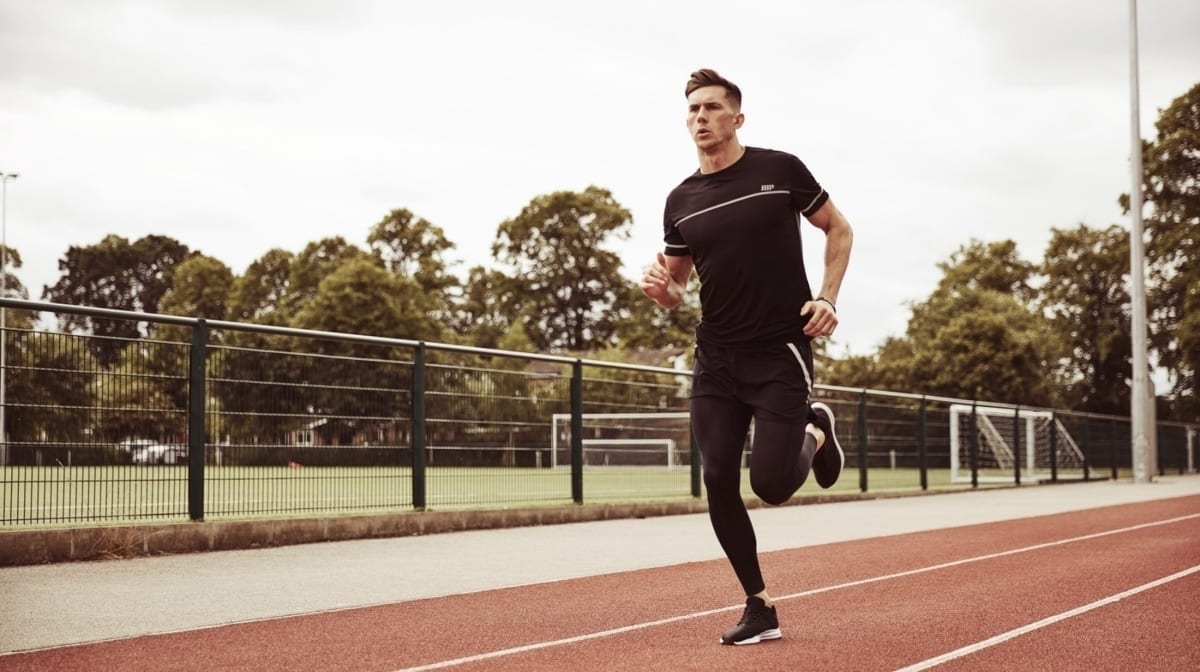What Is Aerobic Endurance? | Definition, Test & Training

On a day-to-day basis, your aerobic endurance impacts your capabilities in the gym, at work, and even around the house. A higher capacity for aerobic endurance means that you can run, cycle, swim and play sports for longer. But it also impacts your ability to climb stairs, walk or any other activity that increases your heart rate. We investigate how training your aerobic endurance can help you.
You'll find in this article:

What is Aerobic Endurance?
Aerobic endurance is all about your level of cardiovascular fitness. Many would argue that this is one of the most vital fitness-related attributes because of its link to heart health.
To improve your aerobic endurance is to improve your body’s capability of meeting higher, faster demands for oxygen and energy, which it needs during more intense exercise.
Why is Aerobic Endurance Important?
Aerobic endurance is incredibly important as it affects how efficiently the body can transport oxygen to where it's needed, for example, during running. Your cardiovascular fitness depends on factors such as age, lifestyle, hereditary conditions and how much you exercise. It's usually at its best from your late teens to your thirties and then naturally declines with age.
Maintaining a good level of aerobic endurance is important for everyone – not just athletes – as it comes with a range of health benefits.
Your heart is a muscle, and like other muscles, it requires routine training to improve its strength and ability to cope with everything that your body demands of it.
Aerobic vs. Anaerobic Exercise & Training
To go ‘anaerobic’ is literally to go without oxygen. In the context of a workout, this is most often when you’ve hit close to your maximum heartrate and there isn’t enough oxygen getting to your busy body.
Anaerobic training involves working at a high intensity, where the body needs to find energy to power your muscles in place of oxygen, whereas aerobic exercise is generally at a light to moderate intensity. Your muscles then break down glycogen (stored carbohydrates) for energy. The body also relies upon the anaerobic system during heavy weight-lifting sessions.
Comparing the two, aerobic exercise is a lighter form that you can keep up for longer periods, while anaerobic is the opposite: quick bursts of high intensity. Your aerobic threshold is therefore the level of intensity you can run at before you accumulate too much lactic acid in the blood. When you go into anaerobic mode you burn more calories in less time but, in the context of long distance running, you are essentially on your last legs at this point.
Anaerobic exercises such as running, weightlifting and cross training increase your anaerobic endurance, meaning that you can work harder for longer.
Both forms of training burn fat and boost your metabolism in a way that it will keep working after you have finished working out.
Aerobic exercise requires oxygen to keep going at the level of exercise you are performing, and burns the fats, carbs and proteins that you have ingested from food and supplements. This is arguably the best approach to achieving lean muscle mass.

How to Improve Aerobic Endurance
Interval-based workouts are recognised as one of the best ways to improve your aerobic endurance, and the beauty is that you can pick and choose the exercises that you prefer. It's all a matter of increasing cardiovascular ability with practice. During anaerobic exercises like weightlifting, you'd improve your chest strength by repeatedly training your pecs, right? The same goes for the heart during aerobic exercise.
Running
Running is one of the best ways to improve aerobic endurance and lends itself to all manner of interval training.
- Jog at a steady pace for 2 minutes
- Increase to a fast for 30 seconds
- Return to stead pace for 2 minutes
- Repeat this exercise for 20 minutes
- Run comfortably for 10 seconds then sprint 10 seconds.
- Run comfortably for 20 seconds then sprint 20 seconds.
- Repeat this while increasing the duration by 10 seconds each time until you reach one minute and rest.
Cycling
With cycling, you can take advantage of changing gears to alter difficulty levels (or settings when on a machine).
- Cycle at a comfortable pace for 3 minutes and then switch to a harder gear for one minute.
- Repeat this over a half hour session.
- You can try adding an alternating incline to your session to really feel the difference and put your heart to work.
Swimming
If impact exercise is an issue, swimming is a great way to get aerobic exercise, and also lends itself readily to interval training.
The length of the pool sets your measures for you. Opt for a HIIT style approach:
- Swim as fast as you can for 30 seconds, followed by a 30 second rest, or swim from one end of the pool to the other at a fast pace followed by a gentler return.
- Repeat this for two minutes with a rest in between sets.
Aerobic Endurance Tests
There are several ways to test your level of aerobic endurance. To begin, you can set your own tests and create your own milestones. Keeping it simple, test yourself once a week on a pre-determined target, for example, a 5 kilometre run. First, see if you can do it at all! Then as you progress, monitor your heart rate and record your maximum, and increase the speed each week, setting the bar a little higher each time while keeping your initial measure (in this case the distance) the same each time.
VO2 Max Test
This test requires personnel and equipment. Your VO2 Max, or maximal oxygen consumption, is the maximum amount of oxygen you are capable of using when you exercise. To test this, you would exercise, for example, running on a treadmill until exhausted, while professionals measure your oxygen consumption, carbon dioxide production and volume of air are measured with specialist equipment.
Pacer or Shuttle Test
This involves a 20-metre distance. The test here concerns the pace that you run at, and you might also know it as a ‘bleep test’. The pre-set bleep marks the cut off for meeting one end of the 20-metre distance. The time between each bleep becomes shorter and shorter, until you are sprinting to make the line at the far end in time.
Take Home Message
Essentially, aerobic endurance is any exercise that uses oxygen to meet energy demands – generally at a light to moderate intensity. Your cardiovascular fitness level is measured in terms of the amount of oxygen pumped by your heart throughout your body to your active muscles.
You can improve your aerobic endurance with practice and repetition, or in other words, by repeatedly performing cardiovascular exercise at a higher intensity each time so that you are pushing your heart to work harder with each session.

14 Chest Exercises For Your Home Workout
If you thought you needed the gym to pump up your pecs, think again.

Casein Vs. Whey Protein | What's The Difference?
Whey? Casein? Both? Which should you choose?








